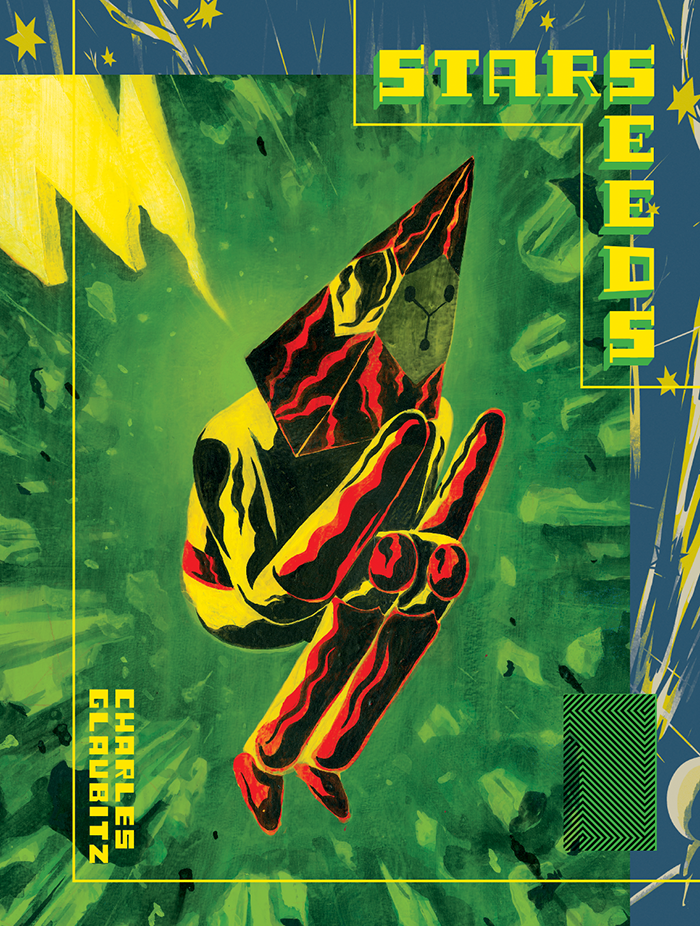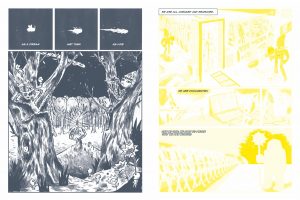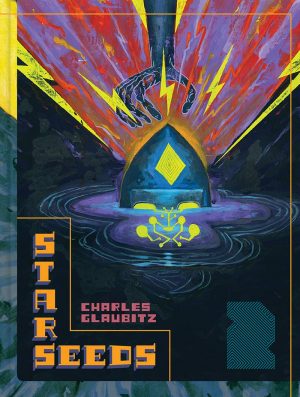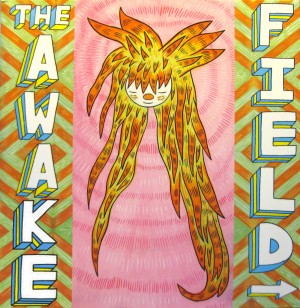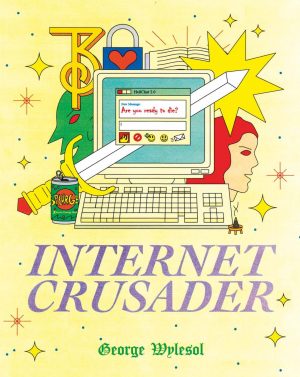Review by Frank Plowright
If the psychedelic cover wasn’t clue enough, an opening line referring to the outer realm of the inner self accompanied by an illustration of a humanoid figure with a pyramid head riding through space on a comet should cement Starseeds as an attempt at something different. The prog rock of comics, perhaps.
A painter and children’s book illustrator by trade, Charles Glaubitz brings elements of both to this complex looking, but ultimately simple story of nature’s children battling the Illuminati, as represented by sentient white turds. It’s an allegorical fable covering several real world issues, some of them too obvious and overworked, with Glaubitz also dipping his toes into areas of of ethics, philosophy and organised religion, the darkness and light represented by the two colour tones used throughout. As seen on the sample pages, the light is a yellowy orange while the dark is bluey grey. It might not seem that way from the sample pages, but in terms of focus the nearest comics touchpoint is Jack Kirby given greater freedom when he returned to Marvel in the mid-1970s, when he didn’t have to concern himself, initially at least, with superheroes. It’ll be a matter of taste as to whether or not Glaubitz’s fine art naivety approach or Kirby’s energy is preferable, but in terms of conceptual identity, the connection is there.
Having noted that, Starseeds is a harder work to come to terms with because it takes so long to say so very little. Glaubitz switches the narrative between the dark and the light, rarely using more than four panels to a page, moving his story forward massive illustration by massive illustration to an inevitable ideological clash. The philosophical points emphasised are merely surface scratching along the line of us all carrying our own shadow, there can be no light without dark, fate has selected where you are, and we can all succumb to the darkness. It’s a variation on Star Wars 101, and it’s unlikely to be the first time encountering such thoughts for any reader, although it is likely to be the first time they’ve encountered them in a graphic novel in 24 point type.
It’s only once Glaubitz has reinforced his messages that Starseeds becomes narratively interesting, and this is just the final thirty or so pages. It’s a transformation that can be summed up as the recycle of life, which is a near exclusively visual sequence. Starseeds appears to end with that, but a continuation followed in 2019.
